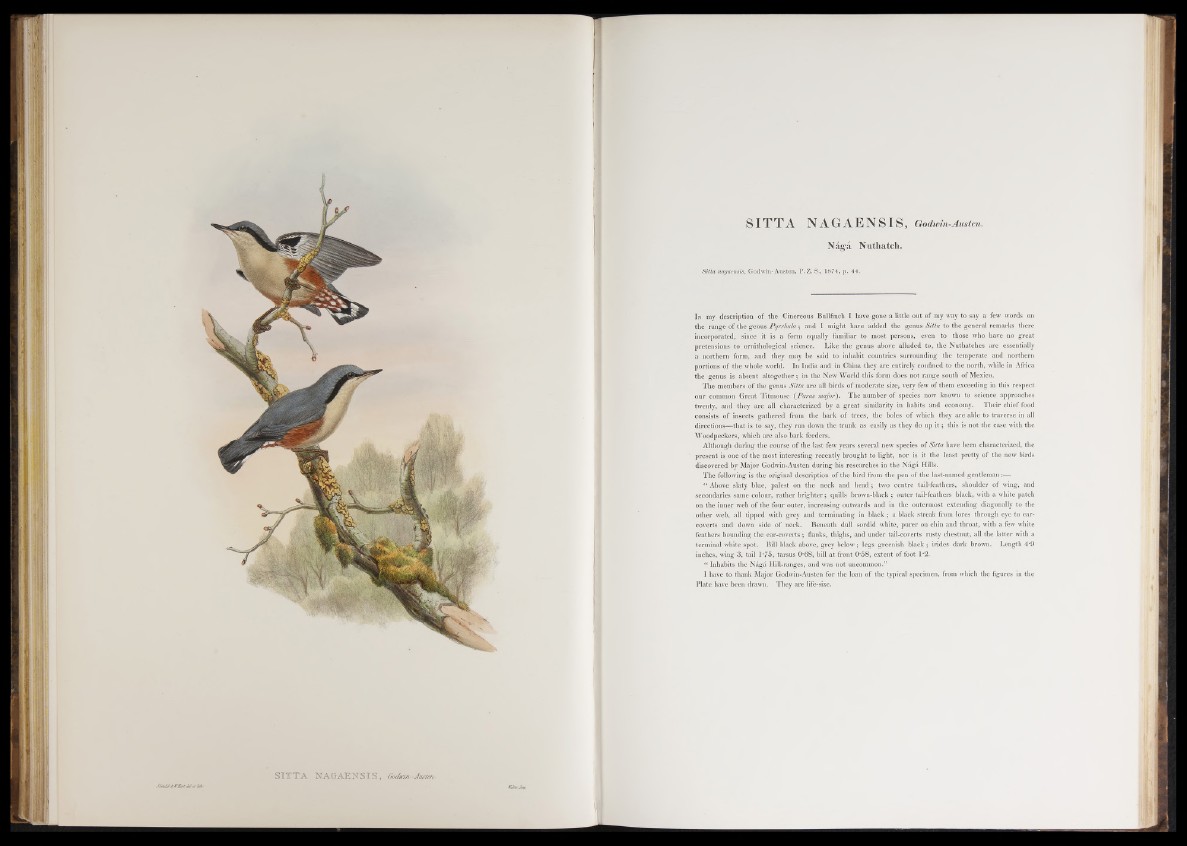
S IT TA NAGAE ifS IS , Godmrv-Austew
S I T T A N A G A E N S I S , G o d i v i n - A u s t e n .
Nag’a N uthatch.
Sitta nagaensis, Godwin-Austen, P. Z. S., 1874, p. 44.
In my description of the Cinereous Bullfinch I have gone a little oat o f my way to say a few words on
the range of the genus Pyrrhula; and I might have added the genus Sitta to the general remarks there
incorporated, since it is a form equally familiar to most persons, even to those who have no great
pretensions to ornithological science. Like the genus above alluded to, the Nuthatches are essentially
a northern form, and they may be said to inhabit countries surrounding the temperate and northern
portions of the whole world. In India and in China they are entirely confined to the north, while in Africa
the genus is absent a ltogether; in the New World this form does not range south of Mexico.
The members of the genus Sitta are all birds of moderate size, very few o f them exceeding in this respect
our common Great Titmouse ('Pants major). The number of species now known to science approaches
twenty, and they are all characterized by a great similarity in habits and economy. Their chief food
consists o f insects gathered from the bark of trees, the boles of which they are able to traverse in all
directions—that is to say, they run down the trunk as easily as they do up i t ; this is not the case with the
Woodpeckers, which are also bark feeders.
Although during the course o f the last few years several new species of Sitta have been characterized, the
present is one of the most interesting recently brought to light, nor is it the least pretty of the new birds
discovered by Major Godwin-Austen during his researches in the Naga Hills.
The following is the original description o f the bird from the pen of the last-named gentleman:—
“ Above slaty blue, palest on the neck and h e a d ; two centre tail-feathers, shoulder of wing, and
secondaries same colour, rather brighter; quills brown-black ; outer tail-feathers black, with a white patch
on the inner web of the four outer, increasing outwards and in the outermost extending diagonally to the
other web, all tipped with grey and terminating in b lack ; a black streak from lores through eye to ear-
coverts and down side of neck. Beneath dull sordid white, purer on chin and throat, with a few white
feathers bounding the ear-coverts ; flanks, thighs, and under tail-coverts rusty chestnut, all the latter with a
terminal white spot. Bill black above, grey below; legs greenish black; irides dark brown. Length 4/9
inches, wing 3, tail l -75, tarsus 0 -68, bill a t front 0 ‘58, extent of foot l -2.
“ Inhabits the Naga Hill-ranges, and was not uncommon.”
I have to thank Major Godwin-Austen for the loan o f the typical specimen, from which the figures in the
Plate have been drawn. They are life-size.